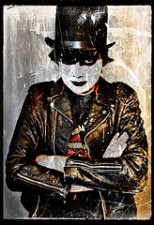Here we go folks, another freewriting exercise! Now, by posting my exercises, I feel like I’m going out on a limb, giving myself just a few minutes to write these, then tossing them up on the blog for all to see. But then again, that’s what it’s all about, right? There’s a measure of risk-taking involved. So, for the uninitiated, here are our rules (with one little amendment):
1. Write on the topic provided.
2. Write for ten minutes. (I changed it from five.) Set a timer if you need to, but no more than ten minutes.
3. No editing! Just write. Grammar or flow don’t matter.
Today’s topic: It’s in the Basement. (Could be Halloween-ish, but doesn’t have to be.)
Here’s mine, done in ten minutes (and it reads like it was done in ten minutes, sadly):
*****
It’s there, I know it is. Far back, in the corner, by the soccer cleats and old books, behind the hot water heater.
It’s there, sitting there, waiting for me.
She says I’m crazy, says that it’s nothing, that it doesn’t exist. But I know better. I’ve gone down there, and I’ve seen it, from its spot behind the hot water heater. I’ve seen it. Worse still is that I know it’s seen me.
I used to go down to get rolls of toilet paper, or a bottle of wine, or Christmas decorations, and I’d feel something, something, undefined and odd but still real, watching. Of course, there was never anything there. I’d turn on the neons hanging from the ceiling, I’d look around, push boxes out of the way, even shine a flashlight into the corners. And nothing.
Still, there was that feeling: eyes on my back. And now, now I know. Because after months of that feeling, I finally saw something.
Something. What it was, I’m not sure, but it was real.
She sent me down to get the bed sheets out of the dryer, and when I heard faint scratching on the cardboard box that held the soccer cleats, I figured it was a mouse. It wouldn’t have been the first time. I turned, and I saw it, or at least part of it.
A foot, pink with long toes. Maybe a tail. Yes, yes a tail. Furry, black, too long to be anything normal.
Yes, I dropped the sheets, and yes, I left them there on the floor.
She thought I was an idiot; I certainly felt like one. I went back down, but brought the heavy Mag Lite with me, not as much for the added light but as a mallet.
And there it was, in the shadows, but not on the floor. It was up, in a corner, between floor joists, red eyes peering out from the rolled insulation. Red eyes, but like a cat’s with vertical pupils. No face, just eyes.
*****
Mine’s a little Halloween-ish if you can’t tell. But I’m curious about other people’s. Add yours in the comments section. Have a little fun with it! After all, it’s just a writing exercise.
C.T.











